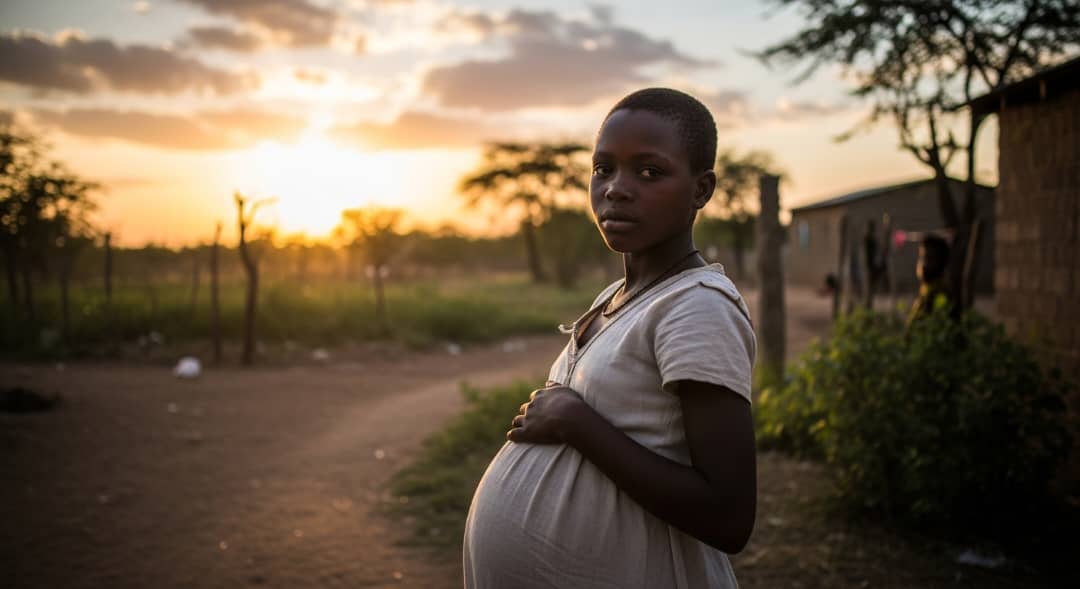✍️ Authored by the ACSPR Team
Shaping Africa’s Future with Evidence, Equity, and Innovation for Impact.
Shaping Africa’s Future with Evidence, Equity, and Innovation for Impact.
“Adolescence should be a chapter of education, growth, and possibility - not antenatal visits and lifelong responsibility.”
Yet for millions of girls worldwide, childhood ends the moment motherhood begins.
According to UNFPA (2023), more than 21 million girls aged 15–19 become pregnant each year, and nearly 12 million give birth - mostly in contexts where contraception, protection, and agency are limited.
Adolescent pregnancy remains one of the clearest indicators of gender inequality, poverty, and denied rights and nowhere is this crisis more pronounced than in Sub-Saharan Africa.
📍 The Global Picture: Progress, But Uneven
The global adolescent birth rate has declined over the last two decades from 64.5 births per 1,000 girls (2000) to 41 births per 1,000 today (WHO, 2023). But this progress hides deep geographical and socioeconomic divides.
Pregnancy and childbirth remain among the leading causes of death for adolescent girls (WHO), meaning teenage pregnancy is not just a social concern - it is a survival issue.
These pregnancies are rarely planned. They are driven by:
● Limited access to sexual and reproductive health services
● Restrictive cultural expectations and norms
● Weak legal protections
● Poverty and exclusion
● Lack of information and autonomy
🌍 Sub-Saharan Africa: The Epicenter of the Challenge
Sub-Saharan Africa holds the highest adolescent fertility rate in the world; averaging ~99 births per 1,000 girls aged 15–19 (UNFPA ESARO, 2023), more than twice the global average.
Some countries exceed emergency levels, with Niger, Chad, and Mali reporting adolescent birth rates above 150 births per 1,000 girls, while Uganda, Malawi, and Mozambique also remain extremely high, each exceeding 100 births per 1,000 girls aged 15–19, according to recent UNFPA regional estimates.
These trends align with the region’s:
● Highest child marriage prevalence in the world
● Lowest contraception access among adolescents
● Limited access to youth-friendly reproductive health services
🇺🇬 . Uganda: A Story of Stagnation
The latest Uganda Demographic and Health Survey (UDHS 2022) shows that approximately 23% of adolescent girls aged 15–19 have begun childbearing. The burden is notably uneven: 25% of rural adolescents have begun childbearing compared to only 18% in urban areas. Education plays a major role; only 6% of girls with secondary education have experienced early pregnancy, whereas the rate rises sharply to 31% among those with no education or only primary schooling. A similar divide appears across economic groups: adolescent childbearing affects 32% of girls in the poorest households, compared to just 12% among those in the wealthiest households.
Over the last decade, adolescent childbearing in Uganda has shown very limited progress, declining only from about 24% in 2011 to 25% in 2016 and then slightly down to 23.5% in 2022; a stagnating trend that signals persistent gaps in prevention, education, and access to sexual and reproductive health services.
📌 Interpretation: The decline exists - but it is slow and uneven.
The data clearly shows: where girls live, learn, and how wealthy they are determines their risk of early motherhood.
⚠️ The Cost: Health, Opportunity & National Development
Teenage pregnancy has lifelong consequences:
● Higher maternal and newborn mortality
● Increased risk of obstetric fistula
● Dropping out of school
● Lower lifetime income and employment prospects
● Increased vulnerability to violence and repeat pregnancy
And the cost goes beyond individuals - it impacts entire economies.
According to the World Bank, every additional year a girl stays in school can increase her future earnings by up to 10–20%, and a one-year increase in women’s education can raise a country’s GDP per capita by up to 10%.
In short: ending teenage pregnancy is not only a health priority - it is an economic strategy.
🚀 The Way Forward: From Awareness to Action
A rights-based, multi-sector approach is essential.
Solutions must include:
● Keeping girls in school; including policies supporting pregnant learners
● Youth-friendly SRHR services; stigma-free and confidential
● Community engagement to shift harmful norms
● Gender-transformative education, not abstinence-only messaging
● Economic empowerment programs for adolescent girls
● Strong enforcement of child marriage and defilement laws
● Involving boys and men because change cannot sit solely on girls’ shoulders
● Youth-friendly SRHR services; stigma-free and confidential
● Community engagement to shift harmful norms
● Gender-transformative education, not abstinence-only messaging
● Economic empowerment programs for adolescent girls
● Strong enforcement of child marriage and defilement laws
● Involving boys and men because change cannot sit solely on girls’ shoulders
Evidence across Africa shows: when girls have knowledge, choices, and opportunity - teenage pregnancy rates fall.
✨The Future Depends on What We Do Now
Adolescent pregnancy is not inevitable - it is preventable.
It reflects whether societies protect girls or fail them.
Reducing adolescent fertility is not just a health goal; it is an investment in equality, dignity, and the future of nations.
The data is clear.
The solutions are known.
Now - it is time to demand the political will and investment to turn the tide for every girl.
The solutions are known.
Now - it is time to demand the political will and investment to turn the tide for every girl.

